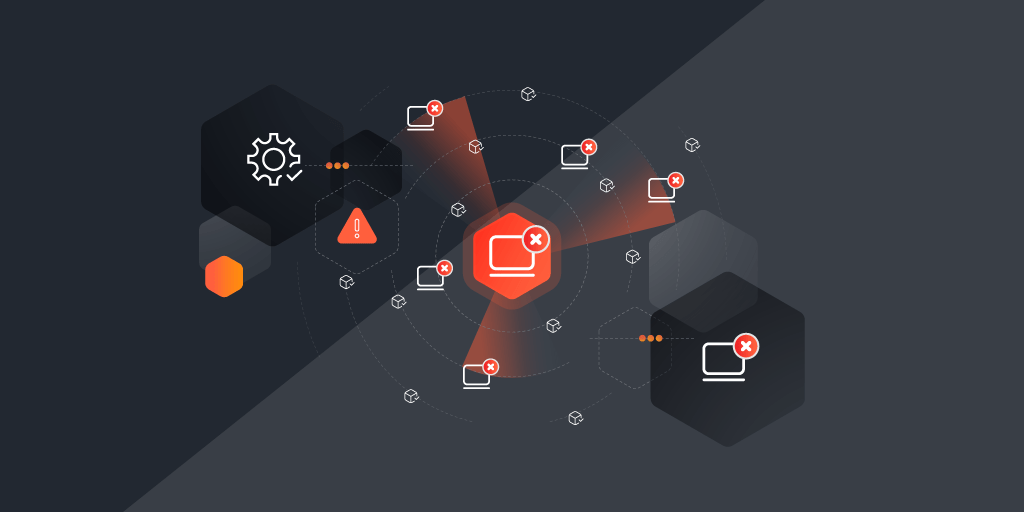
In Q2 2024, Check Point Research reported a 30% year-over-year increase in global cyber attacks, with organizations experiencing an average of 1,636 attacks per week. One of the main sources of cyberattacks are rogue devices.
In this post, we take a look at the role of rogue devices in compromising cybersecurity, and how device detection solutions can help protect you from the risk of a rogue device gaining unauthorized access and launching an attack on your organization.
What Is a Rogue Device?
Rogue devices are unauthorized or unknown hardware that infiltrate a network without permission. Common types include rogue access points, unauthorized USB drives, personal mobile devices, and IoT gadgets that connect without administrative approval.
Rogue devices on the network can pose significant security threats, introducing malware, acting as entry points for hackers, and allowing unauthorized data access. They can be used for malicious activities like data exfiltration or as part of larger cyberattacks.
Because they create hidden vulnerabilities, rogue devices increase the risk of data breaches, compliance violations, and operational disruptions, potentially leading to severe financial and reputational damage for organizations. Maintaining strict control and visibility over all network-connected devices is essential to mitigating these risks.
What Is the Role of Rogue Device Detection in Cybersecurity Asset Management?
Proactive rogue device detection is a critical component of a robust cybersecurity strategy. If you can identify and address unauthorized devices before they compromise network security, you can significantly reduce risk.
Integrating rogue device detection into your cybersecurity strategy has many benefits, including:
- Early threat detection: Proactive detection allows organizations to identify potential threats before they can cause significant damage. This early warning system enables timely response and mitigation efforts.
- Prevention of unauthorized access: By identifying and blocking unauthorized devices, organizations can prevent unauthorized access to sensitive data and systems.
- Protection against data breaches: Rogue devices can be used as entry points for data breaches. Proactive detection helps to minimize the risk of data theft and exposure.
- Improved network performance: Rogue devices on the network can consume network bandwidth and resources, impacting network performance. By identifying and removing unauthorized devices, organizations can improve network efficiency and reliability.
- Regulatory compliance: Many industries have specific regulations regarding network security and data protection. Proactive rogue device detection can help organizations comply with these requirements.
Rogue device detection works in conjunction with other security measures, such as firewalls, intrusion detection systems, and antivirus software, to create a comprehensive defense against cyber threats. A strong cybersecurity posture supported by these measures is essential for ensuring business continuity, and helps organizations maintain operational resilience in the face of cyber threats.
Ensuring Compliance and Regulatory Requirements
Data privacy regulations, such as GDPR and CCPA, place stringent requirements on organizations to protect personal information. Rogue devices can compromise data privacy by providing unauthorized access to sensitive data. Implementing robust rogue device detection, management and prevention measures can help you demonstrate a commitment to data protection and compliance.
Comprehensive device monitoring is essential for demonstrating compliance with industry standards. By tracking device activity, you can perform unauthorized device identification, assess potential risks, and take proactive steps to mitigate threats. This ongoing monitoring can serve as evidence that your organization is taking appropriate measures to protect its network and data.
Best Practices for Detecting and Preventing Rogue Devices
To effectively detect and prevent rogue devices, organizations should implement a comprehensive approach that combines network access controls, advanced detection technologies, and robust policies for device inventory and monitoring.
Network access controls and authentication measures are essential to protect the network from unauthorized access. Strong multi-factor authentication, role-based access control, network segmentation, and guest networks can help to limit the potential damage caused by rogue devices.
Advanced detection technologies and software can provide valuable insights into network activity and identify potential threats. Intrusion detection systems, network behavior analysis, wireless intrusion prevention systems, and endpoint detection and response solutions can help to detect and respond to rogue devices.
Establishing policies for device inventory and monitoring is crucial for maintaining a secure network environment. Organizations should maintain a comprehensive inventory of all devices connected to the network, regularly update their records, and implement monitoring tools to track device activity. Additionally, a well-developed incident response plan can help organizations respond effectively to security breaches involving rogue devices.
Choosing the Right Rogue Device Detection Solution
When selecting a rogue device detection solution, consider the following key features:
- Real-time detection: The solution should be able to detect rogue devices in real-time, providing immediate visibility into unauthorized network access.
- Comprehensive coverage: Ensure the solution can detect a wide range of rogue devices, including wired, wireless, and IoT devices.
- Easy to integrate: The solution should integrate seamlessly with existing network infrastructure and security tools to provide a unified view of network activity.
- Scalability: The solution should be able to scale to accommodate growth in network size and complexity.
- Ease of use: A user-friendly interface can simplify deployment and device management.
- Reporting and analytics: The solution should provide detailed reporting and analytics to help identify trends and improve network security.
Lansweeper offers all of these features and more.
Reliable Rogue Device Detection with Lansweeper
Lansweeper’s Asset Radar offers continuous, real-time monitoring of network traffic to detect rogue devices by sniffing network packets, ensuring that transient or unauthorized devices that may briefly connect and disconnect are identified immediately. Administrators can set up email alerts for instant notifications when such devices are detected, allowing for rapid response to potential security risks.
By employing advanced Credential-free Device Recognition, Lansweeper identifies every device on the network without requiring credentials, even those previously considered non-scannable. The combination of passive and active scanning methods ensures complete visibility and control over the IT environment, effectively eliminating blind spots and reducing the attack surface.
Don’t let rogue devices threaten your organization’s cybersecurity. Learn more about Lansweeper for rogue device detection, or start a free trial today.